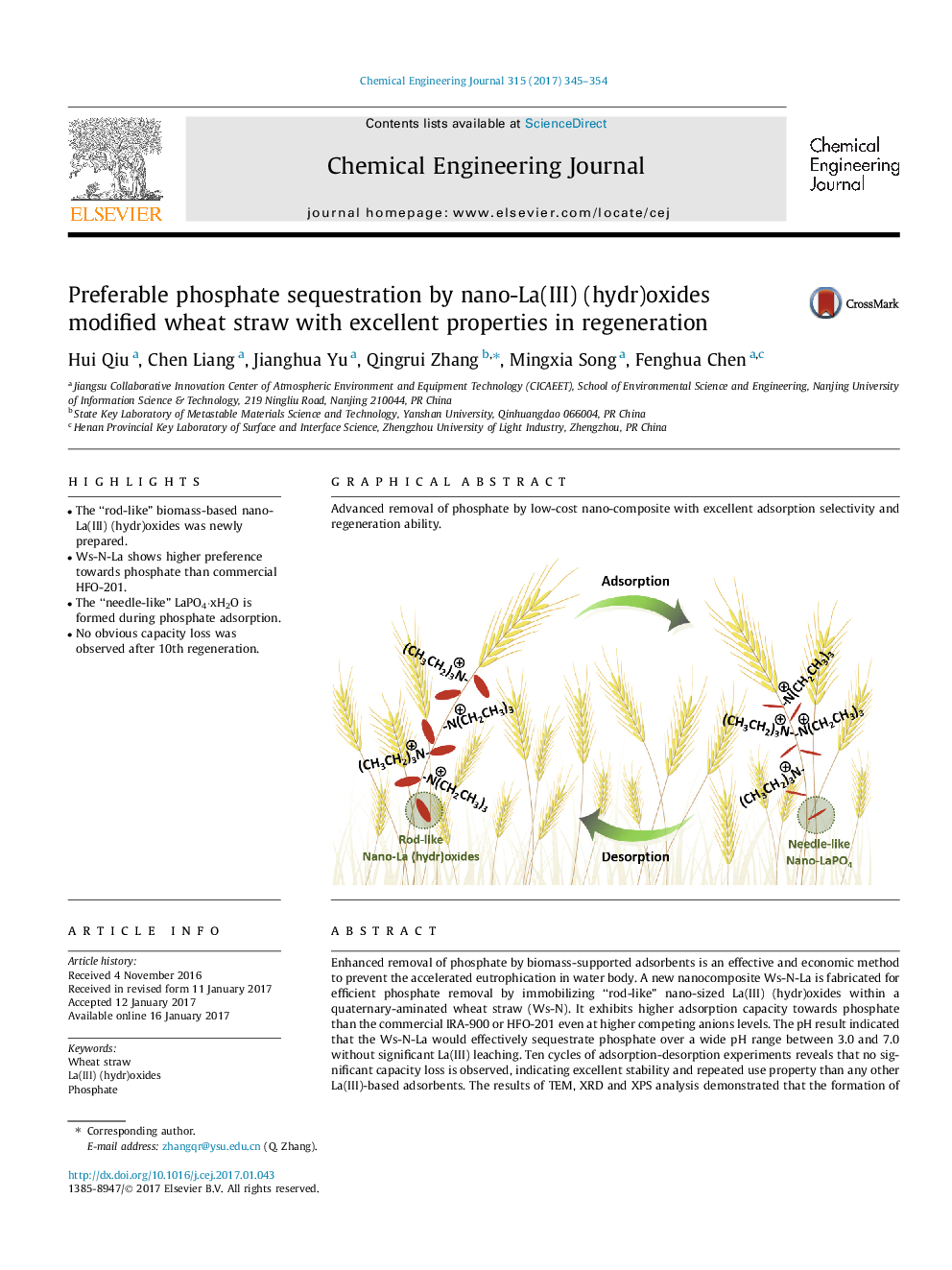| Article ID | Journal | Published Year | Pages | File Type |
|---|---|---|---|---|
| 6466322 | Chemical Engineering Journal | 2017 | 10 Pages |
â¢The “rod-like” biomass-based nano-La(III) (hydr)oxides was newly prepared.â¢Ws-N-La shows higher preference towards phosphate than commercial HFO-201.â¢The “needle-like” LaPO4·xH2O is formed during phosphate adsorption.â¢No obvious capacity loss was observed after 10th regeneration.
Enhanced removal of phosphate by biomass-supported adsorbents is an effective and economic method to prevent the accelerated eutrophication in water body. A new nanocomposite Ws-N-La is fabricated for efficient phosphate removal by immobilizing “rod-like” nano-sized La(III) (hydr)oxides within a quaternary-aminated wheat straw (Ws-N). It exhibits higher adsorption capacity towards phosphate than the commercial IRA-900 or HFO-201 even at higher competing anions levels. The pH result indicated that the Ws-N-La would effectively sequestrate phosphate over a wide pH range between 3.0 and 7.0 without significant La(III) leaching. Ten cycles of adsorption-desorption experiments reveals that no significant capacity loss is observed, indicating excellent stability and repeated use property than any other La(III)-based adsorbents. The results of TEM, XRD and XPS analysis demonstrated that the formation of “needle-like” lanthanum phosphate nanoparticle is the dominant pathway for the specific adsorption of phosphate by nano-La(III) (hydr)oxides. All the results suggested that the biomass-supported nano-composite Ws-N-La can serve as a promising adsorbent for preferable phosphate removal in realistic application.
Graphical abstractAdvanced removal of phosphate by low-cost nano-composite with excellent adsorption selectivity and regeneration ability.Download high-res image (236KB)Download full-size image
